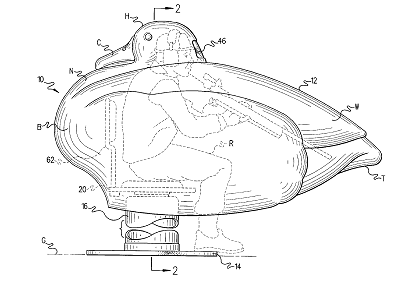Third-Party Submissions: Providing Relevant References to the USPTO, Part II
We continue our discussion of how patent practitioners may submit art to the USPTO that may invalidate a patent or result in §102 or §103 rejections of pending applications. Many are aware, of course, of the methods of bringing new art to the USPTO’s attention with respect to issued patents, for example: Ex Parte Reexaminations (see MPEP 2200 et seq.); and Inter Partes Reexaminations (see MPEP 2600 et seq.). We described Protests (see 37 CFR 1.291; MPEP 1900 et seq.) with the USPTO here. Now we will address Third Party Submissions (see 37 CFR 1.99; MPEP 1134-1134.01) with the USPTO.
While statistical data regarding the frequency of Third Party Submission filings was not readily located, the following is some general information concerning these strategies.
Third Party Submissions under 37 CFR 1.99
A Third Party Submission may be filed by any member of the public against a pending application. The Third Party Submission should include a listing of up to ten (10) patents and publications, including the publication date of the patents and publications. Unlike Protests, “other information” that is relevant and may prove useful during the prosecution of the pending application may not be submitted. Also unlike Protests, a concise explanation of the relevance of each piece of art should not be provided. A copy of each listed patent and publication should be provided with the Third Party Submission. If the art cited in the Third Party Submission is not in English, an English language translation should be provided.
MPEP 1143.01 lists a number of things that should not be submitted with a Third Party Submission:
They Invented What? (No. 136)
U.S. Pat. No. 6,415,807: Decoy hunting/observing blind.

I claim:
1. A blind comprising in combination:
a housing in the form of a hollow shell, said shell having segmental wall portions, and opposite sides of said shell terminating at a lower annular edge, said shell being sized to accommodate a hunter or observer in an upright position therein; said shell is a decoy having an external appearance simulating a fowl being hunted or observed; and shell-supporting means extending upwardly from ground level through said lower annular edge of said shell for mounting said shell above ground level.
They Invented What? (No. 135)
U.S. Pat. No. 3,234,948: Cheese-filter cigaret.
JW Note: The inventor observes that “it is preferred to use a hard cheese as exemplified by Parmesan, Romano or Swiss cheese . . . [however] Aged Cheddars and other “hard” cheeses may also be used”.

I claim:
1. A cigaret filter capable of reducing materially the nicotine and tars in the tobacco smoke, said filter comprising small, well-defined porous particles of hard milk derived cheese having a fat content in excess of 20 percent but being sufficiently dry so that most of the fat is in the interior of the individual particles on the surfaces constituting the walls of pores with which the individual particles are provided and within which filtering occurs.
They Invented What? (No. 134)
U.S. Pat. No. 4,756,555: Wing apparatus for skiers.
JW Note: Many thanks to Stephen Nipper at The Invent Blog for bringing this patent to our attention.

What is claimed is:
1. Apparatus for creating aerodynamic lift to a downhill skier, comprising harness means adapted to be worn by said skier, a left wing structure operatively carried by said harness means, a right wing structure operatively carried by said harness means, connecting means carried by said harness means for operatively connecting said left wing structure as to thereby have said left wing structure operatively carried by said harness means and for operatively connecting said right wing structure as to thereby have said right wing structure operatively carried by said harness means, said left wing structure having a first longitudinal axis extending generally transversely of said skier, said right wing structure having a second longitudinal axis extending generally transversely of said skier, wherein said connecting means enables said left wing structure to be selectively rotatable about said first longitudinal axis while operatively carried by said harness means, wherein said connecting means enables said right wing structure to be selectively rotatable about said second longitudinal axis while operatively carried by said harness means, wherein said connecting means enables said left and right wing structures to be respectively rotatable about said first and second axes independently of each other by said skier to respective selected positions while operatively carried by said harness means, wherein said connecting means is effective for establishing and maintaining a fixed relationship of said first longitudinal axis with respect to said harness means even during rotation of said left wing structure about said first longitudinal axis, and wherein said connecting means is effective for establishing and maintaining a fixed relationship of said second longitudinal axis with respect to said harness means even during rotation of said right wing structure about said second longitudinal axis.


leave a comment